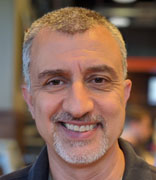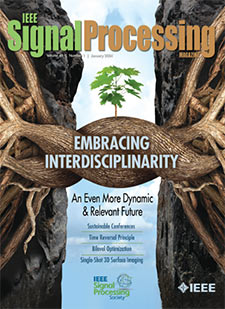- Our Story
- Publications & Resources
- Publications & Resources
- Publications
- IEEE Signal Processing Magazine
- IEEE Journal of Selected Topics in Signal Processing
- IEEE Signal Processing Letters
- IEEE/ACM Transactions on Audio Speech and Language Processing
- IEEE Transactions on Computational Imaging
- IEEE Transactions on Image Processing
- IEEE Transactions on Information Forensics and Security
- IEEE Transactions on Multimedia
- IEEE Transactions on Signal and Information Processing over Networks
- IEEE Transactions on Signal Processing
- IEEE TCI
- IEEE TSIPN
- Data & Challenges
- Submit Manuscript
- Guidelines
- Information for Authors
- Special Issue Deadlines
- Overview Articles
- Top Accessed Articles
- SPS Newsletter
- SigPort
- SPS Resource Center
- Publications Feedback
- Publications FAQ
- Blog
- News
- Dataset Papers
- Conferences & Events
- Community & Involvement
- Professional Development
- For Volunteers
- Information for Authors-OJSP
-
Home
Conferences Events IEEE JSTSP Article IEEE Signal Processing Magazine IEEE TIFS Article IEEE TMM Article IEEE TSP Article Jobs in Signal Processing Lectures Machine Learning Seasonal Schools Signal Processing News SPM Article SPS Distinguished Lectures SPS Newsletter Article SPS Webinar SPS Webinars SPS Webinar Series Webinar webinars
-
Our Story
What is Signal Processing?

The technology we use, and even rely on, in our everyday lives –computers, radios, video, cell phones – is enabled by signal processing. Learn More » -
Publications & Resources
-
SPS Resources
- Signal Processing Magazine The premier publication of the society.
- SPS Newsletter Monthly updates in Signal Processing
- SPS Resource Center Online library of tutorials, lectures, and presentations.
- SigPort Online repository for reports, papers, and more.
- SPS Feed The latest news, events, and more from the world of Signal Processing.
-
SPS Resources
-
Conferences & Events
-
Community & Involvement
-
Membership
- Join SPS The IEEE Signal Processing Magazine, Conference, Discounts, Awards, Collaborations, and more!
- Chapter Locator Find your local chapter and connect with fellow industry professionals, academics and students
- Women in Signal Processing Networking and engagement opportunities for women across signal processing disciplines
- Students Scholarships, conference discounts, travel grants, SP Cup, VIP Cup, 5-MICC
- Young Professionals Career development opportunities, networking
- Get Involved
-
Technical Committees
- Applied Signal Processing Systems
- Audio and Acoustic Signal Processing
- Bio Imaging and Signal Processing
- Computational Imaging
- Image Video and Multidimensional Signal Processing
- Information Forensics and Security
- Machine Learning for Signal Processing
- Multimedia Signal Processing
- Sensor Array and Multichannel
- Signal Processing for Communication and Networking
- Signal Processing Theory and Methods
- Speech and Language Processing
- Technical Working Groups
- More TC Resources
-
Membership
-
Professional Development
-
Professional Development
- Mentoring Experiences for Underrepresented Young Researchers (ME-UYR)
- Micro Mentoring Experience Program (MiME)
- Distinguished Lecturer Program
- Distinguished Lecturers
- Distinguished Lecturer Nominations
- Past Lecturers
- Distinguished Industry Speaker Program
- Distinguished Industry Speakers
- Distinguished Industry Speaker Nominations
- Industry Resources
- IEEE Training Materials
- Jobs in Signal Processing: IEEE Job Site
-
Career Resources
- SPS Education Program Educational content in signal processing and related fields.
- Distinguished Lecturer Program Chapters have access to educators and authors in the fields of Signal Processing
- PROGRESS Initiative Promoting diversity in the field of signal processing.
- Job Opportunities Signal Processing and Technical Committee specific job opportunities
- Job Submission Form Employers may submit opportunities in the area of Signal Processing.
-
Professional Development
-
For Volunteers
-
For Board & Committee Members
- Board Agenda/Minutes* Agendas, minutes and supporting documentation for Board and Committee Members
- SPS Directory* Directory of volunteers, society and division directory for Board and Committee Members.
- Membership Development Reports* Insight into the Society’s month-over-month and year-over-year growths and declines for Board and Committee Members
-
For Board & Committee Members
Popular Pages
Today's:
- Awards & Submit Award Nomination
- Submit a Manuscript
- Information for Authors
- (MLSP 2024) 2024 IEEE International Workshop on Machine Learning for Signal Processing
- (ACSSC 2024) 2024 Asilomar Conference on Signals, Systems, and Computers
- Board of Governors
- (SLT 2024) 2024 IEEE Spoken Language Technology Workshop
- IEEE/ACM Transactions on Audio Speech and Language Processing
- Dataset Resources
- Conference Call for Papers
- IEEE Journal of Selected Topics in Signal Processing
- Video & Image Processing Cup
- Signal Processing 101
- IEEE Transactions on Multimedia
- IEEE Transactions on Information Forensics and Security
All time:
- Information for Authors
- Submit a Manuscript
- IEEE Transactions on Image Processing
- 404 Page
- IEEE/ACM Transactions on Audio Speech and Language Processing
- IEEE Transactions on Information Forensics and Security
- IEEE Transactions on Multimedia
- IEEE Signal Processing Letters
- IEEE Transactions on Signal Processing
- Conferences & Events
- IEEE Journal of Selected Topics in Signal Processing
- Information for Authors-SPL
- Conference Call for Papers
- Signal Processing 101
- IEEE Signal Processing Magazine
Last viewed:
- Submit a Manuscript
- Call for Proposals: IEEE ASRU 2025
- Our Story
- Editorial Board
- IEEE Transactions on Multimedia
- 404 Page
- Action: Promote Half-Price Dues to Recruit New Members
- Conferences & Events
- Jobs in Signal Processing
- (ACSSC 2024) 2024 Asilomar Conference on Signals, Systems, and Computers
- Access Restricted
- IEEE Signal Processing Magazine
- Video & Image Processing Cup
- (ICASSP 2021) 2021 IEEE International Conference on Acoustics, Speech, and Signal Processing
- Organize Local Initiatives
Upcoming Webinar: "How the Mobile Phone Became a Camera"
You are here
Newsletter Menu
Newsletter Categories
Top Reasons to Join SPS Today!
1. IEEE Signal Processing Magazine
2. Signal Processing Digital Library*
3. Inside Signal Processing Newsletter
4. SPS Resource Center
5. Career advancement & recognition
6. Discounts on conferences and publications
7. Professional networking
8. Communities for students, young professionals, and women
9. Volunteer opportunities
10. Coming soon! PDH/CEU credits
Click here to learn more.
News and Resources for Members of the IEEE Signal Processing Society
Upcoming Webinar: "How the Mobile Phone Became a Camera"
Upcoming Webinar - 21 September 2020
Webinar Topic: "How the Mobile Phone Became a Camera"
Presenter: Dr. Peyman Milanfar
Based on the IEEE Xplore® article
RAISR: Rapid and Accurate Image Super Resolution
published in the IEEE Transactions on Computational Imaging, November 2016
| Presenter: Date: Time: Duration: Register: Download: |
Dr. Peyman Milanfar 21 September 2020 11:00 AM EDT (New York time) Approximately 1 hour Attendee Registration The original article is open access and freely available to download, on IEEE Xplore® |

The IEEE Signal Processing Society would like to express our concern and support for the members of our global community and all affected by the current COVID-19 pandemic. We appreciate your continued patience and support as we work together to navigate these unforeseen and uncertain circumstances. We hope that you, your families, and your communities are safe!
About this topic:
The first camera phone was sold in 2000, when taking pictures with your phone was an oddity, and sharing pictures online was unheard-of. Today, barely twenty years later, the smartphone is more camera than phone. This transformation was enabled by advances in computational photography — the science and engineering of making great images from small form factor, mobile cameras. Modern algorithmic and computing advances, including machine learning, have changed the rules of photography, bringing to it new modes of capture, post-processing, storage, and sharing. This webinar will explore a brief history of digital and computational photography and describe some of the key recent advances of this technology, including burst photography and super-resolution.
About the presenter:

Dr. Peyman Milanfar received his undergraduate degree in electrical engineering and mathematics from the University of California, Berkeley, and the M.S. and Ph.D. degrees in electrical engineering from the Massachusetts Institute of Technology.
He founded MotionDSP, which was acquired by Cubic, Inc. He is a Principal Scientist/Director at Google Research, where he leads the Computational Imaging team. Prior to this, he was a Professor of Electrical Engineering at University of California, Santa Cruz, from 1999 to 2014. He was Associate Dean for Research at the School of Engineering from 2010 to 2012. From 2012 to 2014, he was on leave at Google-x, where he helped develop the imaging pipeline for Google Glass. His team at Google developed the digital zoom pipeline for the Pixel phones, which includes the multi-frame super-resolution (Super Res Zoom) pipeline, and the RAISR upscaling algorithm. In addition, the Night Sight mode on Pixel 3 uses our Super Res Zoom technology to merge images (whether you zoom or not) for vivid shots in low light, including astrophotography.
Dr. Milanfar has been a keynote speaker at numerous technical conferences including Picture Coding Symposium (PCS), SIAM Imaging Sciences, SPIE, and the International Conference on Multimedia (ICME). Along with his students, he has won several best paper awards from the IEEE Signal Processing Society. He is a Distinguished Lecturer of the IEEE Signal Processing Society, and a Fellow of the IEEE “for contributions to inverse problems and super-resolution in imaging.”
Open Calls
Society News
Chapter & DL News
SPS on Twitter
- DEADLINE EXTENDED: The 2023 IEEE International Workshop on Machine Learning for Signal Processing is now accepting… https://t.co/NLH2u19a3y
- ONE MONTH OUT! We are celebrating the inaugural SPS Day on 2 June, honoring the date the Society was established in… https://t.co/V6Z3wKGK1O
- The new SPS Scholarship Program welcomes applications from students interested in pursuing signal processing educat… https://t.co/0aYPMDSWDj
- CALL FOR PAPERS: The IEEE Journal of Selected Topics in Signal Processing is now seeking submissions for a Special… https://t.co/NPCGrSjQbh
- Test your knowledge of signal processing history with our April trivia! Our 75th anniversary celebration continues:… https://t.co/4xal7voFER
Home | Sitemap | Contact | Accessibility | Nondiscrimination Policy | IEEE Ethics Reporting | IEEE Privacy Policy | Terms | Feedback
© Copyright 2024 IEEE – All rights reserved. Use of this website signifies your agreement to the IEEE Terms and Conditions.
A not-for-profit organization, IEEE is the world's largest technical professional organization dedicated to advancing technology for the benefit of humanity.









